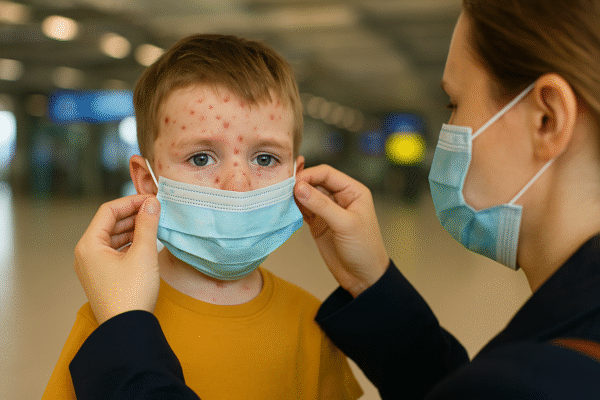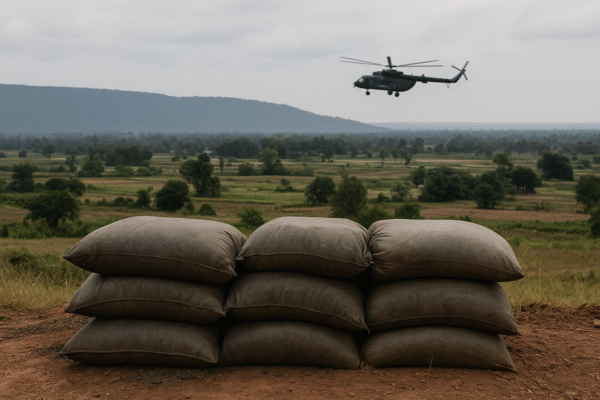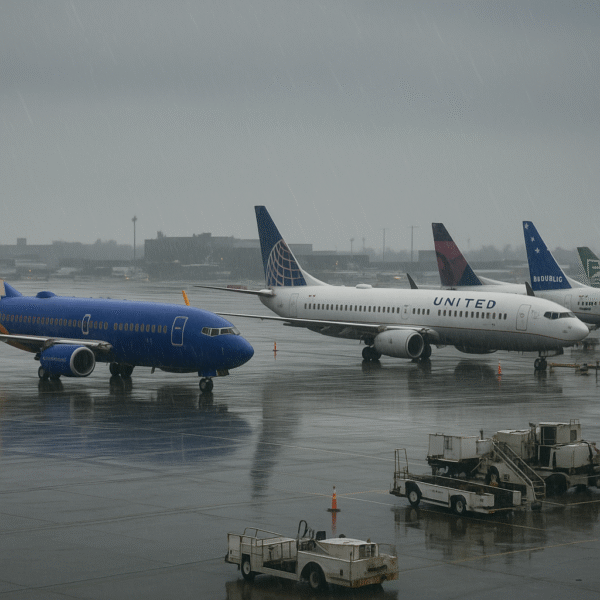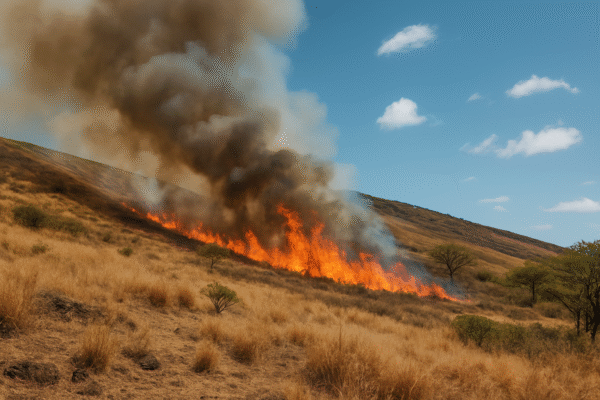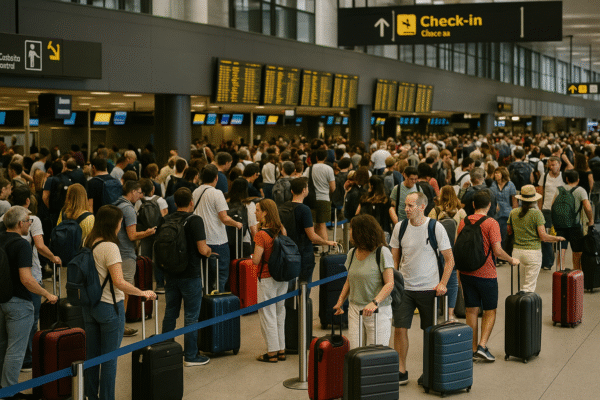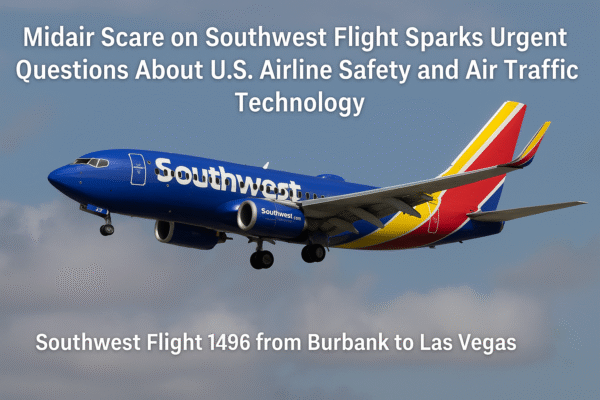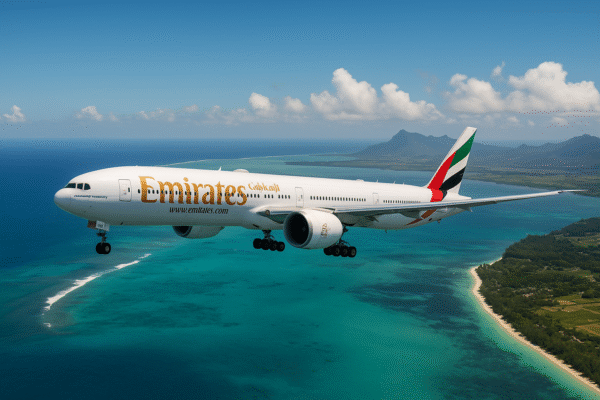On a routine afternoon flight from Burbank, California to Las Vegas, Nevada, Southwest Airlines Flight 1496 triggered a wave of concern across the aviation industry after a dramatic midair incident. The Boeing 737 made an abrupt descent of over 600 feet to avoid a potential collision with another aircraft. While the flight landed safely in Las Vegas, two flight attendants were injured, and the Federal Aviation Administration (FAA) has since launched a formal investigation into the near miss.
The incident occurred shortly after takeoff from Hollywood Burbank Airport when the aircraft, cruising at 14,100 feet, received two collision avoidance alerts. The pilot executed an emergency descent to 13,475 feet, narrowly avoiding another aircraft that had encroached dangerously close — just 4.86 miles away laterally and a mere 350 feet vertically, according to flight tracking service Flightradar24.
Passengers aboard reported a sudden and jarring drop. While no travelers were physically harmed, the injured crew members were treated for minor injuries. The Federal Aviation Administration confirmed it is investigating the incident to determine whether existing safety systems and protocols performed as expected.
A Wake-Up Call for an Overburdened Airspace
This event has reignited a long-simmering debate about air traffic safety in the United States. With U.S. airspace among the busiest in the world, the FAA faces mounting challenges in managing flight volumes that have surged in the post-pandemic travel rebound. According to FAA data, commercial flights across U.S. airspace now exceed 45,000 per day on average.
At the center of the incident is the Traffic Collision Avoidance System (TCAS), a long-standing onboard safety mechanism designed to alert pilots to conflicting aircraft. While TCAS successfully prompted evasive action in this case, experts warn that such near-misses highlight a deeper systemic issue: the outdated state of the nation’s air traffic control (ATC) infrastructure.
Calls for Technological Modernization
Aviation experts and pilot unions have long advocated for upgraded ATC systems. The FAA’s ongoing NextGen initiative, aimed at modernizing the national airspace using satellite-based navigation and digital communication, remains underfunded and delayed. Without widespread implementation, aircraft continue to rely on radar and manual coordination, particularly in congested flight corridors like Southern California and the Southwest.
According to the U.S. Department of Transportation, NextGen technologies could reduce flight delays by up to 41% and decrease close-call incidents by enhancing real-time aircraft separation and trajectory planning. However, integration across airlines, airports, and international systems remains a work in progress.
Artificial intelligence and predictive analytics could further revolutionize aviation safety by enabling proactive conflict resolution before alerts are triggered. By integrating AI into existing systems, pilots and controllers could receive earlier warnings, safer rerouting suggestions, and even automated risk mitigation in real time.
Pilot Training and Human Response Still Critical
While technological upgrades are vital, aviation safety experts caution against over-reliance on automation. The quick thinking and precise maneuvering demonstrated by the pilot of Flight 1496 were crucial in avoiding a potentially catastrophic midair collision. This underscores the importance of rigorous and recurrent pilot training programs.
Captains and crew must be thoroughly trained in interpreting collision avoidance systems, responding swiftly to real-time threats, and coordinating seamlessly with air traffic control. The Southwest Airlines incident illustrates that even with advanced technology, human decision-making remains the final safeguard.
What the FAA Investigation Could Mean for the Future
The FAA has not yet released a timeline for concluding its investigation, but industry analysts expect that the findings will likely prompt updated safety recommendations and accelerate pressure for reform. Should systemic vulnerabilities be identified, it could lead to changes in how close aircraft can safely fly at similar altitudes, especially in busy airspace zones like Southern California and Nevada.
Moreover, the National Transportation Safety Board (NTSB) may join the investigation if further safety lapses are identified, adding an extra layer of scrutiny and regulatory oversight.
Passenger Safety and Public Confidence
While commercial aviation remains one of the safest forms of travel, public confidence can be easily shaken by such incidents. In the wake of the Southwest near miss, many travelers have expressed concern over the increasing complexity of airspace and the limitations of current safety protocols.
To restore trust, airlines and regulators must emphasize transparency, communication, and a clear commitment to investing in both technology and crew readiness. The FAA has stated that it will continue to monitor airline compliance and safety data trends to prevent future occurrences.
Looking Ahead: Smarter, Safer Skies
As demand for air travel continues to rise, the U.S. aviation system must evolve to meet safety expectations. Enhanced ATC automation, real-time risk analysis, improved pilot training, and better coordination between civilian and commercial aircraft are essential components of a more resilient airspace.
While the Southwest Airlines incident was alarming, it serves as a valuable case study in both the successes and gaps within the current aviation safety framework. As the skies grow more crowded, the pressure is on industry leaders to ensure that incidents like this remain rare — not routine.
For more travel news like this, keep reading Global Travel Wire




